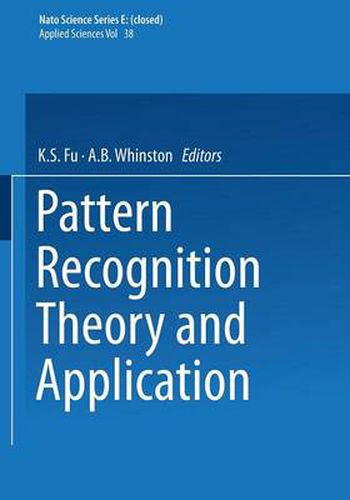Readings Newsletter
Become a Readings Member to make your shopping experience even easier.
Sign in or sign up for free!
You’re not far away from qualifying for FREE standard shipping within Australia
You’ve qualified for FREE standard shipping within Australia
The cart is loading…






This title is printed to order. This book may have been self-published. If so, we cannot guarantee the quality of the content. In the main most books will have gone through the editing process however some may not. We therefore suggest that you be aware of this before ordering this book. If in doubt check either the author or publisher’s details as we are unable to accept any returns unless they are faulty. Please contact us if you have any questions.
Research in the field of pattern recognition both in theo retical terms and in the area of appl ication continues to flourish. Pattern recognition is a fairly diverse field involving researchers whose primary disciplines spread over at least a half dozen fields. Possibly because of the great diversity of backgrounds but a common interest in certain broad areas of application, the field has grown so rapidly and yet seems to promise at least a similar growth rate for the future. This book is a collection containing some of the papers that were presented at the N. A. T. O. Advanced Study Institute held in Bandol, France, September 1975. The main purpose of the institute was to present material which would provide a basic background in the field. Thus, survey papers covering syntactic methods, picture processing, classification theory, and speech recognition were presented. This should have provided the listener (and we hope now, the reader) with an acquaintance with the basic tools, a look at some of the appl ications and an appraisal of how each of the particular topics will evolve. A more recent addition to the pattern recognition family is the work in the areas of economics and group choice. Since the process of recognizing and inter preting patterns is so fundamental, it probably is no surprise when a particular discipline is discovered to be amenable to the already developed techniques.
$9.00 standard shipping within Australia
FREE standard shipping within Australia for orders over $100.00
Express & International shipping calculated at checkout
Stock availability can be subject to change without notice. We recommend calling the shop or contacting our online team to check availability of low stock items. Please see our Shopping Online page for more details.
This title is printed to order. This book may have been self-published. If so, we cannot guarantee the quality of the content. In the main most books will have gone through the editing process however some may not. We therefore suggest that you be aware of this before ordering this book. If in doubt check either the author or publisher’s details as we are unable to accept any returns unless they are faulty. Please contact us if you have any questions.
Research in the field of pattern recognition both in theo retical terms and in the area of appl ication continues to flourish. Pattern recognition is a fairly diverse field involving researchers whose primary disciplines spread over at least a half dozen fields. Possibly because of the great diversity of backgrounds but a common interest in certain broad areas of application, the field has grown so rapidly and yet seems to promise at least a similar growth rate for the future. This book is a collection containing some of the papers that were presented at the N. A. T. O. Advanced Study Institute held in Bandol, France, September 1975. The main purpose of the institute was to present material which would provide a basic background in the field. Thus, survey papers covering syntactic methods, picture processing, classification theory, and speech recognition were presented. This should have provided the listener (and we hope now, the reader) with an acquaintance with the basic tools, a look at some of the appl ications and an appraisal of how each of the particular topics will evolve. A more recent addition to the pattern recognition family is the work in the areas of economics and group choice. Since the process of recognizing and inter preting patterns is so fundamental, it probably is no surprise when a particular discipline is discovered to be amenable to the already developed techniques.